Mitarbeiter Sediment- und Isotopengeologie / Staff Sediment and Isotope Geology
Here we list active members of the Department and their research focus and list staff members who have moved on. Nachstehend finden Sie eine Liste der derzeitigen und ehemaligen Mitarbeiter und ihrer Forschungsaktivitäten.
Chair - Lehrstuhl
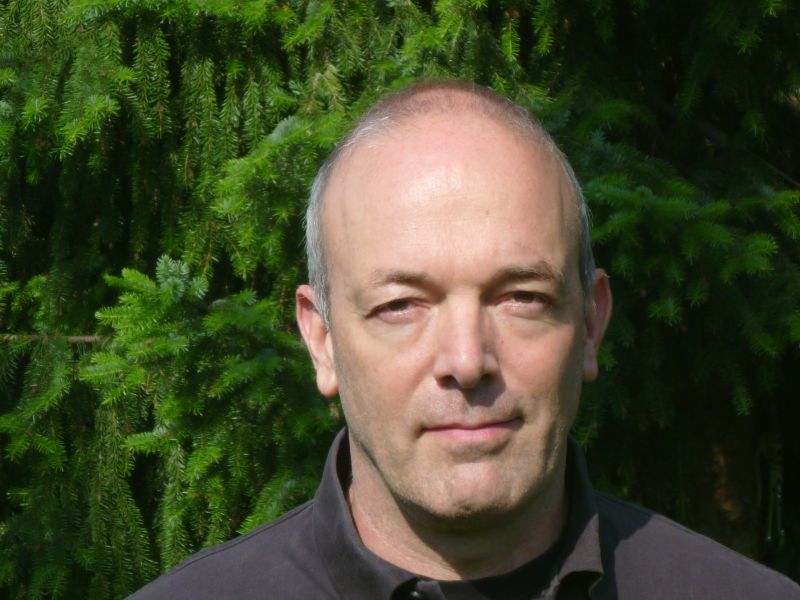
Prof. Dr. Adrian Immenhauser
Sediment- und Isotopengeologie/Sediment and Isotope Geology
IA 5/185
Tel: +49-234-32-28250
Akademische Forschungsschwerpunkte: Prozess-orientierte Sedimentologie, anorganische Geochemie und Isotopengeologie, Karbonate Petrologie und Diagenese, Experimentelle Ansätze, Biomineralisation und Karbonat-Archiv Forschung.
Angewandte Forschungsschwerpunkt: Karbonate als geothermale Speicher
Fundamental research: Process-oriented sedimentology, inorganic geochemistry and isotope geology, carbonate petrology and diagenesis, experimental approaches, biomineralization, carbonate archive research.
Applied research: Carbonates as geothermal reservoirs. See also https://www.ieg.fraunhofer.de/de/geschaeftsbereiche/georessourcen/geoth…
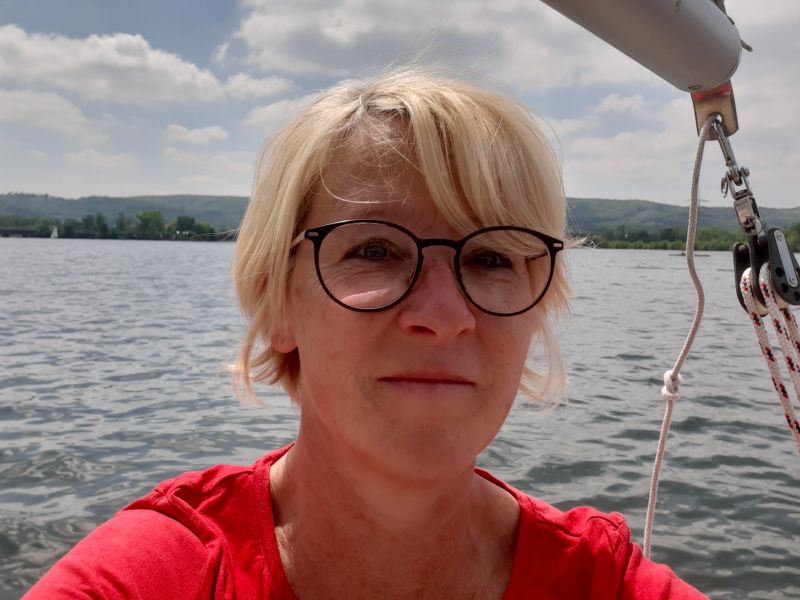
Sekretariat
Cornelia Schäfer
Sekretärin
IA 5/069
Tel: +49-234-32-23250
Geschäftszeiten: Mo, Di, Do: 9:00 - 12:30 Uhr; Fr: Homeoffice
Prof. Daniel Herwartz - Sedimentary Geochemistry
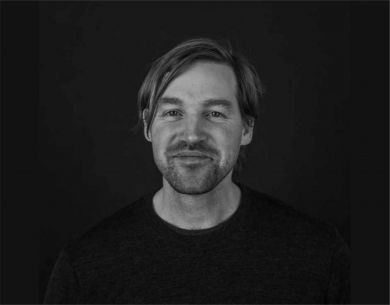
My present research focusses on the oxygen cycle. This includes the water cycle and chemical sediments precipitating from water. Oxyanions such as PO43-, SO43-, CO32- or Si(OH)4 dissolved in water exchange isotopes with H2O and thus conserve an isotopic record over Earth history. In the classic approach the 18O/16O isotope ratio is used to read this record, e .g. to reconstruct paleo-temperatures from carbonate rocks. Additional 17O/16O ratios provide a second dimension to the classic oxygen isotope system. This allows testing if paleotemperatures are accurate. Reconstructions of present and past water cycles are improved and critical parameters such as paleo-relative humidity can be reconstructed. Air O2 comprises particularly low 17O/16O ratios providing a natural tracer for respiration. My goal is to fully understand the underlying processes and oxygen fluxes in order to use the respective chemical sediments as faithful archives for reconstructing Earth’s history. This quantitative approach is useful to trace any oxygen bearing compound in nature and is thus suitable for a broad variety of topics. Previous research topics include fossil bones, dating of high-pressure rocks, early Earth, Snowball Earth events and cosmochemistry.
Kontakt: Lehrstuhl Sedimentäre Geochemie
Ruhr-Universtät Bochum
Fakultät für Geowissenschaften
Institut für Geologie, Mineralogie und Geophysik; Raum: IA E5/179
Universitätsstraße 150
44801 Bochum
Tel.: +49-(0)234-32-22307
E-mail: daniel.herwartz@ruhr-uni-bochum.de
Full publication list on Google Scholar: https://scholar.google.com/citations?user=igT-b0kAAAAJ&hl=en
Selected Publications:
Herwartz D., Pack A., Nagel T.J. (2021): A CO2 greenhouse efficiently warmed the early Earth and decreased seawater 18O/16O before the onset of plate tectonics. Proceedings of the National Academy of Sciences 118 (23), e2023617118. https://www.pnas.org/content/118/23/e2023617118.short
Herwartz D. (2021) Triple oxygen isotopes in igneous, metamorphic and hydrothermally altered rocks. In: Triple oxygen isotopes on Earth, edited by Andreas Pack and Ilya Bindeman, Reviews in Mineralogy and Geochemistry 86, 291-322. https://pubs.geoscienceworld.org/msa/rimg/article/86/1/291/593237
Herwartz D., Surma J., Voigt C., Assonov S., Staubwasser M. (2017) Triple oxygen isotope systematics of structurally bonded water in gypsum. Geochimica et Cosmochimica Acta 209, 254-266. https://www.sciencedirect.com/science/article/abs/pii/S0016703717302491
Herwartz D., Pack A., Krylov D., Xiao Y., Muelenbachs K., Sengupta S., Di Rocco T. (2015) Revealing the climate of snowball Earth from Δ17O systematics of hydrothermal rocks. Proceedings of the National Academy of Sciences 112, 5337-5341. https://www.pnas.org/content/112/17/5337
Herwartz D., Pack A., Friedrichs A., Bischoff A. (2014) Identification of the giant impactor Theia in lunar rocks. Science 344, 1146-1150. https://science.sciencemag.org/content/344/6188/1146
Pack A. and Herwartz D. (2014) The triple oxygen isotope composition of the Earth mantle and understanding variations in terrestrial rocks and minerals. Earth and Planetary Science Letters 390, 138-145. https://www.sciencedirect.com/science/article/abs/pii/S0012821X14000260
Herwartz D., Tütken T., Jochum K.P., Sander P.M. (2013) Rare earth element systematics of fossil bone revealed by LA-ICPMS analysis. Geochimica et Cosmochimica Acta 103, 161-183. https://www.sciencedirect.com/science/article/abs/pii/S0016703712006205
Herwartz D., Münker C., Tütken T., Hoffmann J. E., Wittke A., Barbier B. (2013) Lu-Hf systematics of fossil biogenic apatite and their effects on geochronology. Geochimica et Cosmochimica Acta 101, 328-343. https://www.sciencedirect.com/science/article/abs/pii/S0016703712005613
Herwartz D., Tütken T., Münker C., Jochum K.P., Stoll B., Sander P.M. (2011) Timescales and mechanisms of REE and Hf uptake in fossil bones. Geochimica et Cosmochimica Acta 75, 82-105. https://www.sciencedirect.com/science/article/abs/pii/S001670371000551X
Herwartz D., Nagel T.J., Münker C., Scherer E.E., Froitzheim N. (2011) Tracing two orogenic cycles in one eclogite sample by Lu-Hf garnet chronometry. Nature Geoscience 4, 178-183. https://www.nature.com/articles/ngeo1060
Continental Carbonate Archives - Kontinentale Karbonat Archive
Prof. em. Dr. Detlev Richter
IA 4/075
Tel: +49-234-32-23253
Research interests: Sedimentology and petrography, speleothem research, dolomitization, quartz provenance, clay minerals, heavy minerals
Forschungsinteressen: Sedimentologie und Petrographie, Speleothem Forschung, Dolomitisierung, Quarz Provenanz, Tonmineralogie, Schwereminerale.
Sedimentology, Sedimentary Petrography, Geochemistry and Diagenesis, Geothermal Geology - Sedimentologie, sedimentäre Petrologie, Geochemie und Diagenese, geothermale Geologie

Dr. Mathias Müller
Dr. Mathias Müller
Scientist/Wissenschaftlicher Mitarbeiter
IA 5/53
Tel: +49-234-32-23256
Research interests: Dolomitization, diagenesis and metamorphism of carbonate archives, using petrography, fluid inclusions, and anorganic geochemistry, with a focus on proxy preservation under increasing diagenetic and (anchi-) metamorphic conditions.
Forschungsinteressen: Dolomitisierung, Diagenese und Metamorphose von Karbonat Archiven, Petrographie, Flüssigkeitseinschlüsse, anorganische Geochemie. Erhaltung und Überprägung von Proxydaten unter zunehmender Versenkungsdiagenese und niedrig-gradiger Metamorphose.
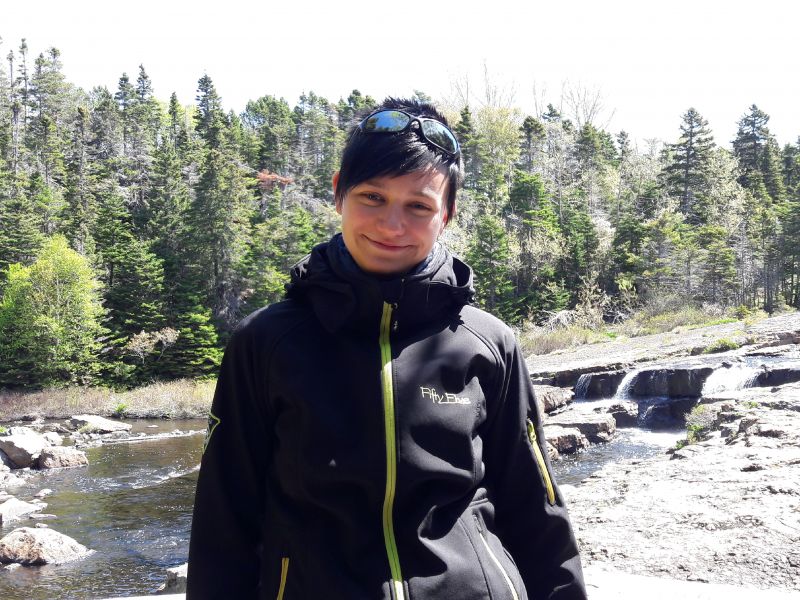
Tanja Unger
Tanja Unger
PhD/Doktorandin (Immenhauser/Aretz)
IA 5/173
Tel: +49-234-32-25457
Research interests: Sedimentology and Palaeozoic palaeontology, Devonian reef architecture, biodiversity, palaeoecology, trilobites
Forschungsinteressen: Sedimentologie und Paläozoische Paläontologie. Devonische Riffe. Biodiversität und Paläoökologie. Trilobiten.

Christine Zhong
Doktorandin/PhD (Immenhauser/Lokier)
IA 5/175
Tel: +49-234-32-23255
Research interests: Sedimentology, actualistic and fossil discontinuity surfaces, actualisistic carbonate depositional environments.
Forschungsinteressen: Sedimentologie, aktualistische und fossile Hartgründe, aktualistische Ablagerungsräume von Karbonaten.
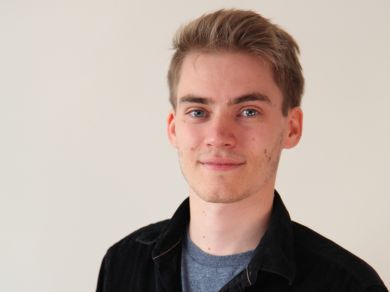
Manfred Heinelt
Doktorand/PhD (Immenhauser/Bracke)
RUB und Fraunhofer IEG
Raum G1-004 & IA 5/175
Tel: +49-234-32-23255
Manfred.heinelt@ieg.fraunhofer.de & manfred.heinelt@rub.de
Research interests: Sedimentology and petrography, Devonian carbonate geology, karstification, geothermal geology.
Forschungsineressen: Sedimentologie und Petrographie, Devonische Karbonat Geologie, Karstbildung, Geothermale Geologie.
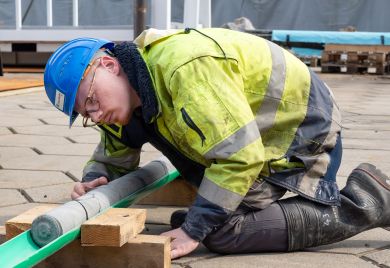
Felix Jagert
Doktorand/PhD (Immenhauser/Wohnlich)
Fraunhofer IEG
Raum G1-1-014
Tel. +49-234-32-10838
felix.jagert@ieg.fraunhofer.de & felix.jagert@rub.de
|
Research interests: Evaluation of hydraulic efficient fracture-systems and characterization of deep ground-water-flow using geophysical well logging, hydraulic field tests and 3D geological modelling. Forschungsinteressen: Hydraulische effiziente Störungs-Systeme. Charakterisierung von tiefen Grundwassereigentschaften mithilfe von Geophysik, Untersuchung von Borungen, hydraulische Tests im Gelände und 3D Modellierung. |

Ozioma Uwakwe
Doktorandin/PhD (Immenhauser/Riechelmann)
IA 5/179
Tel: +49-234-32-23255
Research interests: Experimental approaches to carbonate research. Topics include hydrothermal scaling experiments or cave-analogue experiments.
Forschungsinteressen: Experimentalle Ansätze in der Karbonatforschung. Experimente zum Thema geothermale Versinterung und Analoge von Karbonatfällung in Höhlen.
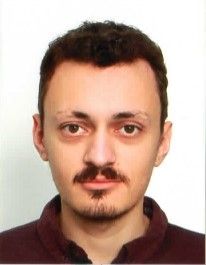
Vivien Folliot
Doktorand/PhD (Immenhauser/Della Porta)
IA 5/173
Tel.: +49-234-32-25457
Research interests: Dolomite Mountains, early diagenetic dolomitisation, diagenesis, geochemistry.
Forschungsinteressen: Dolomiten, frühdiagenetische Dolomitisierung, Diagenese, Geochemie.
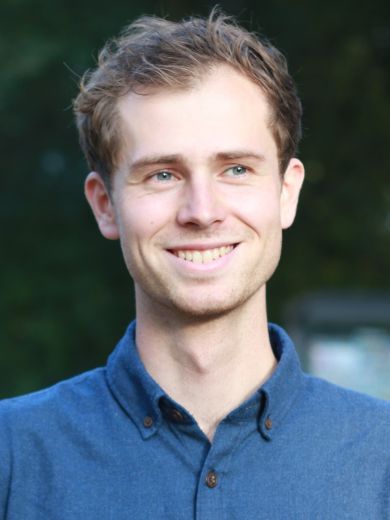
Max Berndsen
Doktorand/PhD (Immenhauser/Licha/Alms; Fraunhofer IEG)
RUB & Fraunhofer IEG
Raum G1-004
Maximilian.Berndsen@ruhr-uni-bochum.de & maximilian.berndsen@ieg.fraunhofer.de
Research interests: Geochemistry and petrology, carbon capture and storage, CO2 mineralisation, geothermal geology.
Forschungsinteressen: Geochemie und Petrologie, Kohlenstofffixierung, CO2 Mineralisation, geothermale Geologie.
Palaeontology - Paläontologie
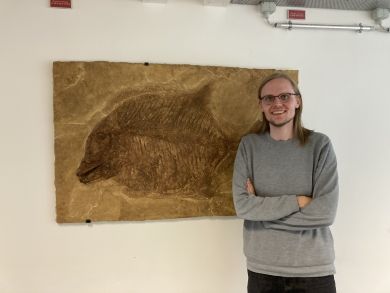
Dr. Kevin Stevens
Scientist/Wissenschaftlicher Mitarbeiter
IA 5/161
Tel: +49-234-32-25459
Research interests: Paleobiology of cephalopods and fishes, microstructures, geochemistry and diagenesis of biogenic carbonates and phosphates.
Forschungsinteressen: Paläobiologie von Cephalopoden und Fischen, Mikrostrukturen, Geochemie und Diagenese von biogenen Karbonaen und Phosphaten.
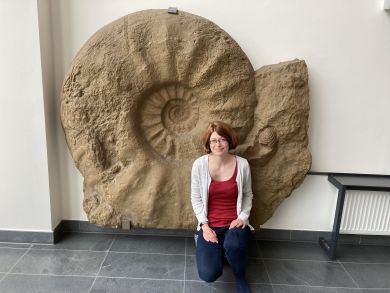
Janina Falkenberg
PhD/Doktorandin (Mutterlose)
IA 5/161
Tel: +49-234-32-25459
Research interests: micropalaeontology, calcareous nannofossils, archaeometry, provenance analysis and archaeothermometry of historic mortars and mortar-based materials.
Forschungsinteressen: Mikropaläontologie, kalkige Nannofossilien, Archäometrie, Provenanz Analyse und Archäothermometrie von historischen Mörteln und mörtel-ähnlichen Materialien.
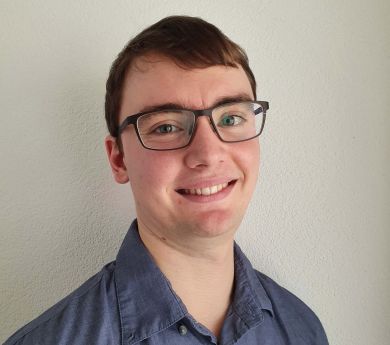
Dr. Alexander Pohle
Scientist/Wissenschaftlicher Mitarbeiter
IA 5/181
Tel: +49-234-32-25584
Research interests: Paleobiology of fossil cephalopods, Palaeozoic nautiloids, Mesozoic coleoids, Bayesian phylogenetic inference.
Forschungsinteressen: Paläobiologie fossiler Kopffüßer, Paläozoische Nautiloideen, Mesozoische Coleoideen, Bayes'sche phylogenetische Inferenz.
Isotope Geochemistry Laboratory - Labor für Isotopengeochemie
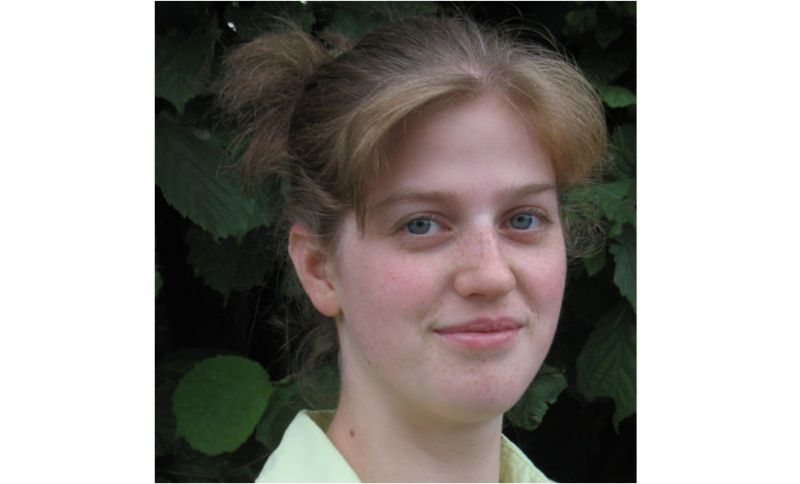
Dr. Sylvia Riechelmann (Dr. rer. Nat. RUB)
Laboratory Management / Laborleitung
Academic Councilor / Akademische Rätin
IA 01/157
Tel. +49-234-32-25462 / 25458
Email: sylvia.riechelmann@rub.de
Research interests: traditional and non-traditional stable isotopes (C, O, H, Mg, Ca), major and trace element geochemistry, and radiogenic isotopes (Sr) of carbonates and waters; paleoclimate and paleoenvironmental reconstructions; continental and marine climate archives (e.g., speleothems); diagenesis; cave monitoring; hydrogeochemistry
Forschungsinteressen: Traditionelle und nicht-traditionelle stabile Isotope (C, O, H, Mg, Ca), Geochemie von Haupt- und Spurenelementen, und radiogene Isotopie (Sr) von Karbonaten und Wasser; Paläoklimatologie; kontinentale und marine Klimaarchive (z.B. Speleotheme); Diagenese; Höhlenmonitoring; Hydrogeochemie

Kathrin Delli Carri
Technical Assistant / Chemisch-Techn. Assistentin
IA 01/159
Tel. +49-234-32-25455 / 24814
Email: kathrin.dellicarri@rub.de
Tasks: sample preparation for the analysis of the non-traditional stable isotope systems of Calcium and Magnesium; sample preparation for the analysis of radiogenic Strontium isotope ratios; sample preparation and measurement via ICP-OES of major and trace element concentrations; sample preparation and measurement via CF-IRMS of the traditional stable isotope systems of Carbon and Oxygen of carbonates, Carbon of Dissolved Inorganic Carbon (DIC), Oxygen and Hydrogen of water
Aufgaben: Probenvorbereitung für die Analyse der nicht-traditionellen stabilen Isotopensysteme Calcium und Magnesium; Probenvorbereitung für die Analyse der radiogenen Strontium Isotopenverhältnisse; Probenvorbereitung und Messung via ICP-OES der Haupt- und Spurenelementkonzentrationen; Probenvorbereitung und Messung via CF-IRMS der traditionellen stabilen Isotopensysteme Kohlenstoff und Sauerstoff von Karbonaten, Kohlenstoff von Dissolved Inorganic Carbon (DIC), Sauerstoff und Wasserstoff von Wasser
Anastasija-Elaine Drese-Holstein
Student assistant / Studentische Hilfskraft
IA 01/159
Email: Anastasija-Elaine.Drese-Holstein@ruhr-uni-bochum.de
Tasks: Processing sample material into powder; weighing of sample and standard material for carbon and oxygen isotope analysis and major and trace element concentration analysis; cleaning procedures of various laboratory glassware and filament holders for Strontium isotope ratio analysis; digitalisation of the results of reference materials; measurement of Strontium isotope ratios via TIMS
Aufgaben: Verarbeitung von Probenmaterial zu Pulver; Einwiegen von Proben- und Standardmaterial für die Kohlenstoff- und Sauerstoffisotopenanalyse sowie die Konzentrationsanalyse von Haupt- und Spurenelementen; Reinigungsverfahren verschiedener Laborglaswaren und Filamenthalter für die Analyse des Strontiumisotopenverhältnisses; Digitalisierung der Ergebnisse von Referenzmaterialien; Messung von Strontiumisotopenverhältnissen via TIMS
Raster Electron Microscopy and Cathodoluminescence - Rasterelektronenmikroskopie und Kathodolumineszenz
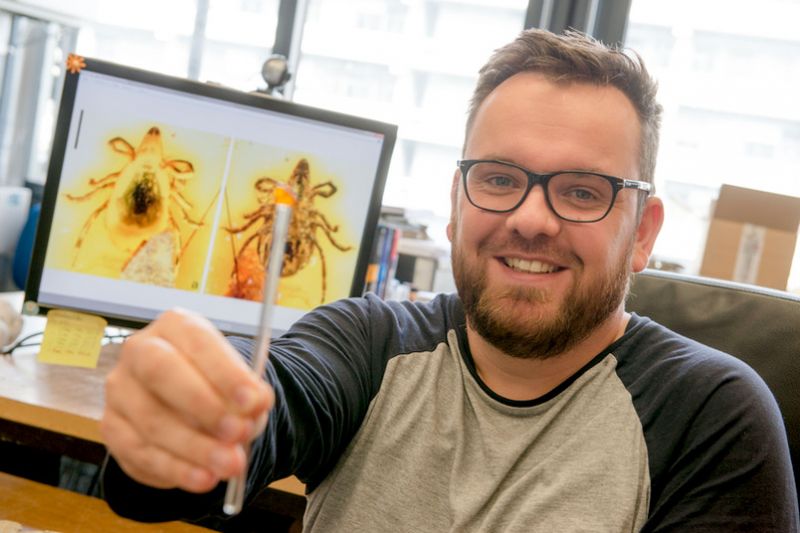
Dr. René Hoffmann
E-mail - Rene.Hoffmann@ruhr-uni-bochum.de
Gebäude/Raum: IB 02/161 (Büro/Office, IB 02/151; Labor/Laboratory)
Tel: +49-234-32-23203 -23338 / -28338
Research interests: Recent and extinct Cephalopods, phylogenetic-systematics, biostratigraphy, quantitative morphology, functional morphology, biogenic carbonates as (paleo-) environmental recorder, high-resolution, non-invasive imaging methods (micro-CT, nano-CT, synchrotron radiation).
Forschungsinteressen: Rezente und ausgestorbene Cephalopoden, Phylogenie-Systematik, Biostratigraphie, quantitative and funktionelle Morphologie, biogene Karbonate als Paläoumwelt Indikatoren, hochauflösende, nicht-invasive optischen Methoden (Mikro-CT, Nano-Ct, Synchrotron Bestrahlung).
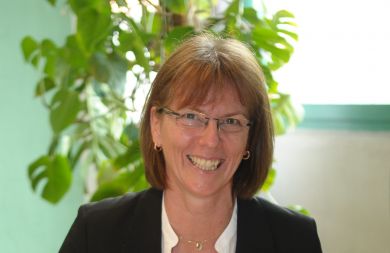
Sabine Weisel
E-mail: sabine.weisel@rub.de
Operator/Technische Angestellte
IB 02/163
Tel: +49-234-32-24136
Mikroanalytical laboratory, REM CL EMP
Former staff members - Ehemalige Mitarbeiter
Dr. Johan ten Veen
TNO - Built Environment and Geosciences
Geological Survey of the Netherlands
Princetonlaan 6
P.O. Box 80015
3508 TA Utrecht
The Netherlands
Barbara Raczek
Dr. Dana Riechelmann
Johannes Gutenberg-Universität Mainz
Geographisches Institut
Sabine Sitter
Sekretariat Inst. f. Geologie, Mineralogie u. Geophysik
Ruhr-Universität Bochum
Raum: NA 01/132
Tel: +49 234 32 23233
Noushin Arshadi
Labortechnikerin Technische Chemie
NBCF 04/688
Tel: +49-234-32-26834
Dr. Stefan Huck
Leibnitz Universität Hannover
Institut für Geologie
Callinstr. 30
30167 Hannover
Prof. Dr. Ulrich Heimhofer
Leibnitz Universität Hannover
Institut für Geologie
Callinstr. 30
30167 Hannover
Prof. Dr. Stéphane Bodin
Aarhus University
Department of Geoscience
8000 Aarhus C
Tel. +45 87156471
stephane.bodin@geo.au.dk
Dr. Andrea Niedermayr
Akad. Rätin, Hydrogeochemie
NA 4/131
Tel: +49-234-32-25454